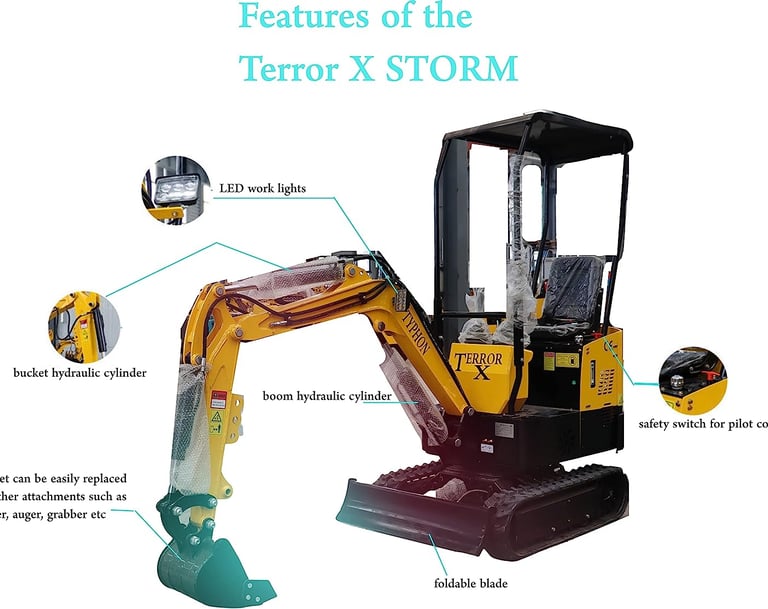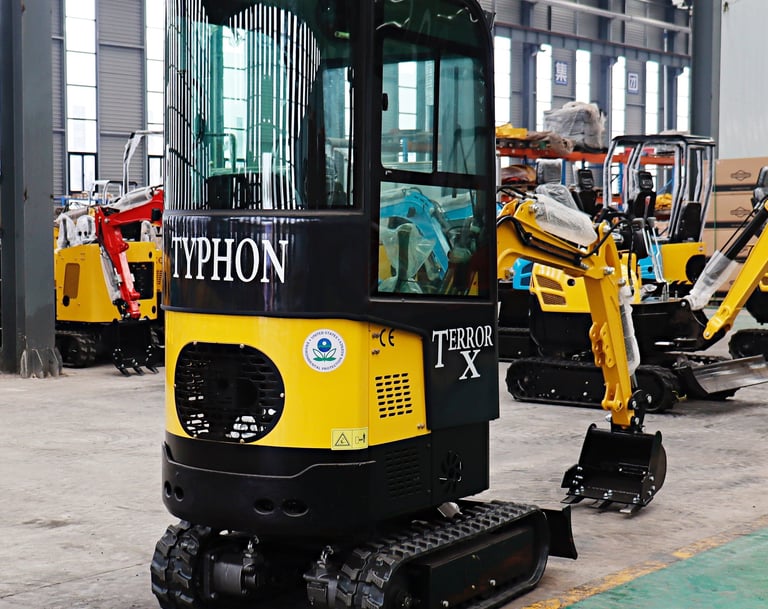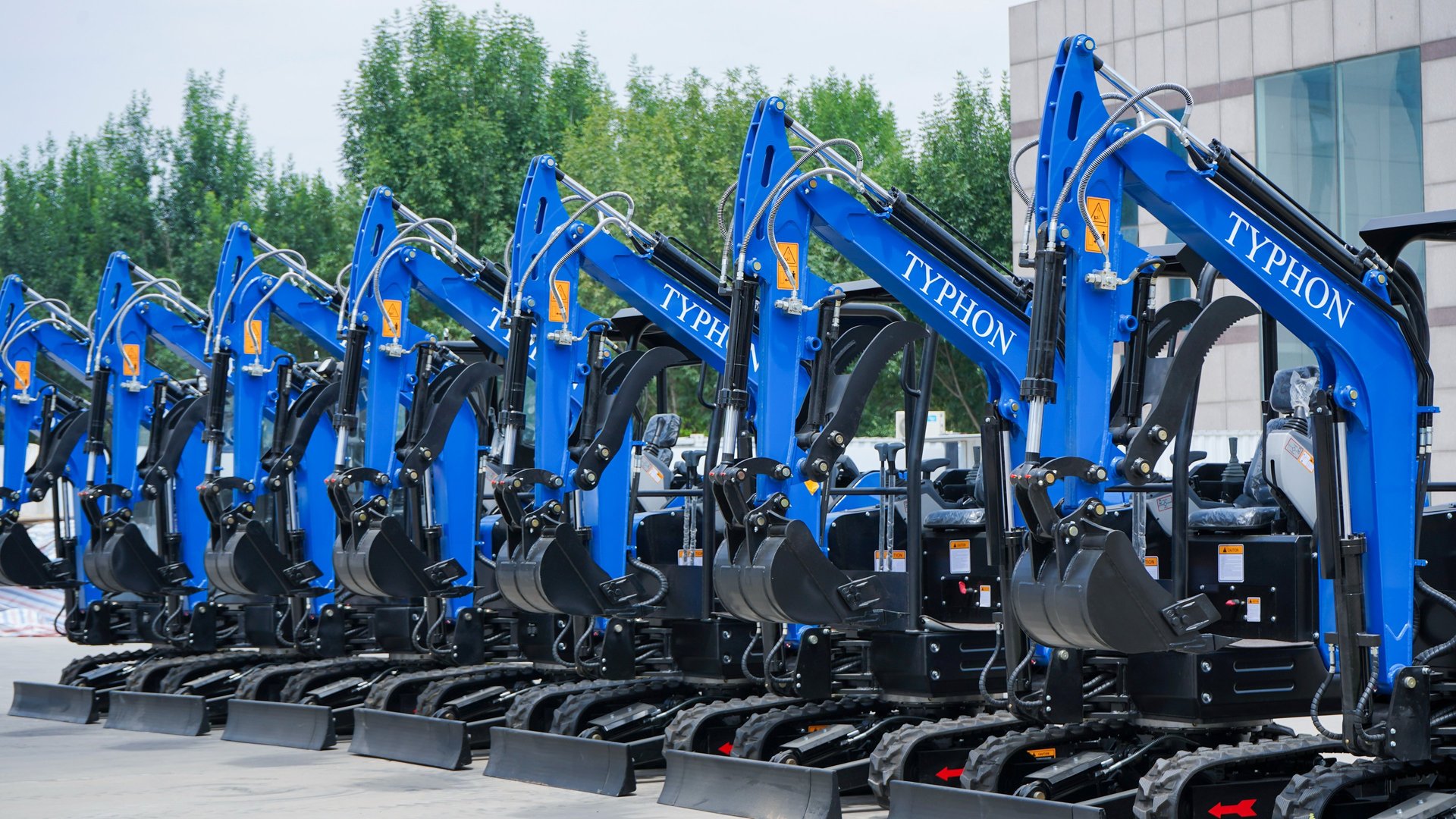
Mini Excavator Machines
Explore features like swing boom, retractable tracks, cabin, air conditioning, and hydraulic thumb clip when buying a mini excavator.
Mini Excavator
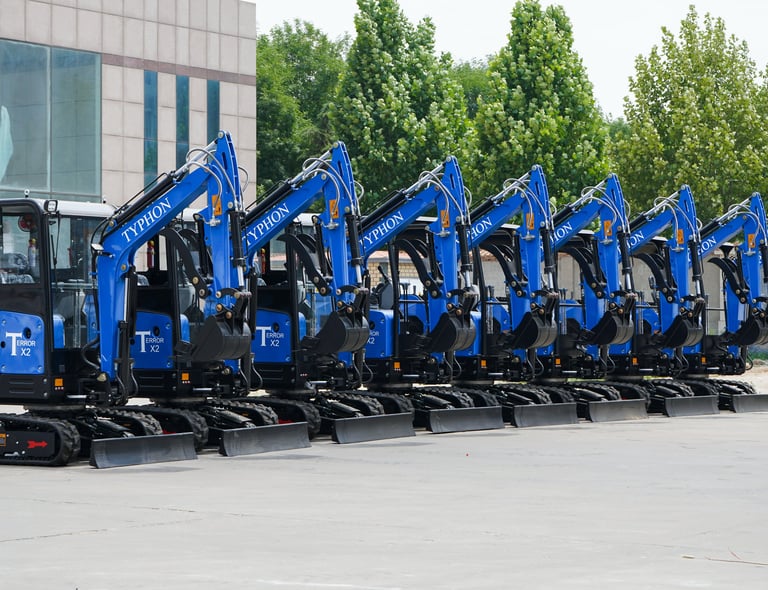




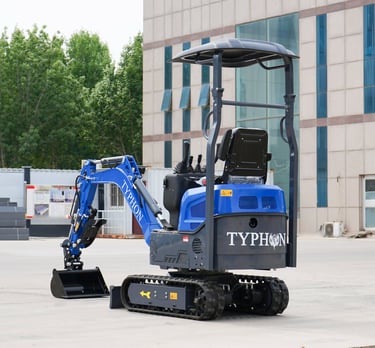
Learn about the important features to look out for when purchasing mini excavators, .including weight, swing boom, retractable tracks, cabin, air conditioning, hydraulic thumb clip, digging depth, and machine width.
Points to Consider When Choosing a Mini Excavator
Size and Weight. Pick an excavator that fits your work area and is easy to move. ...
Attachments and Versatility. Your excavator should handle different jobs with ease. ...
Operator Comfort and Controls. ...
Maintenance and Durability.
Brand reputation, warranty and online after-sales support
The TERROR range of mini excavators by TYPHON offers high fuel efficiency, maximum durability and low price. With more than 10 models on sale in the United States, ranging from 800 kg to 4,000 kg, TYPHON mini excavators provide the right type of service whatever your construction demands.
Excavator Machines
Explore top features when buying mini excavator machines for your projects.
The mini excavator's swing boom and retractable tracks are game-changers.
Satisfied Customer Name
New York
The cabin and air conditioning in the mini excavator are a great addition.
Happy Customer Name
Los Angeles
★★★★★
★★★★★
More Mini Excavators to choose from
Explore features like swing boom, cabin, hydraulic thumb clip, and more.

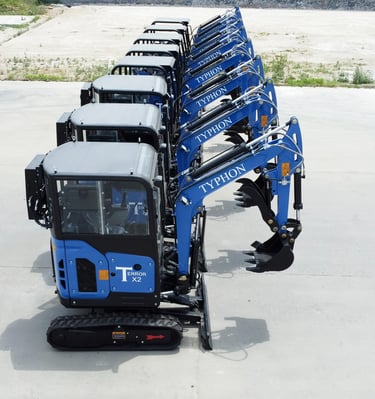

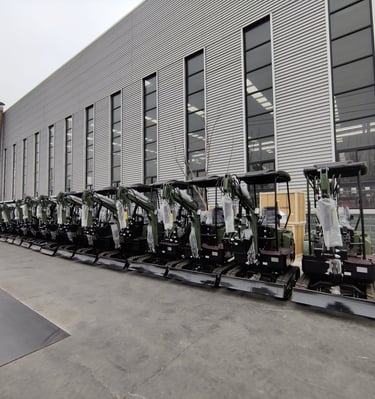
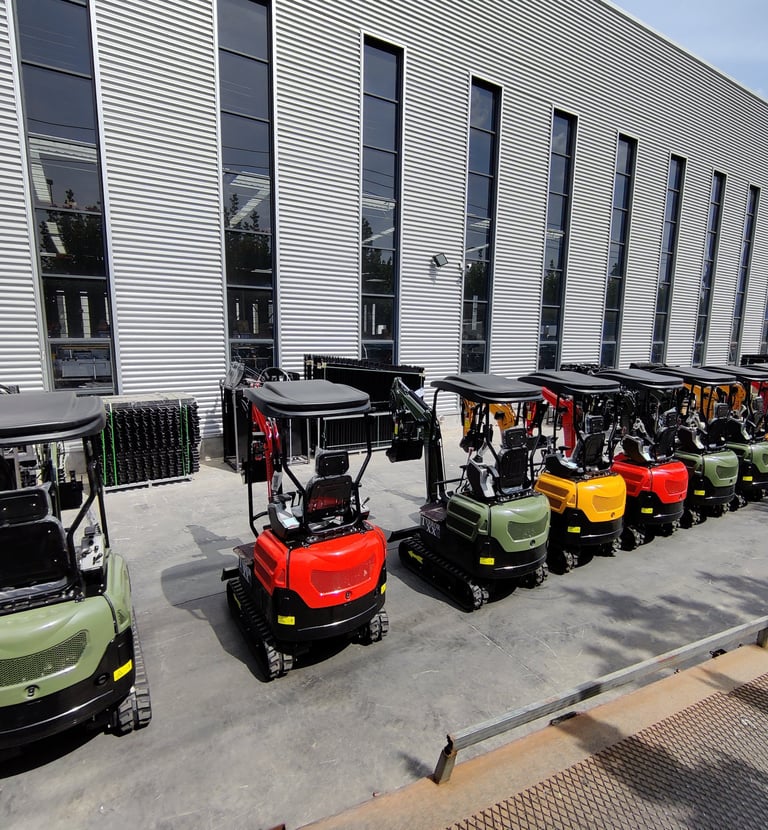

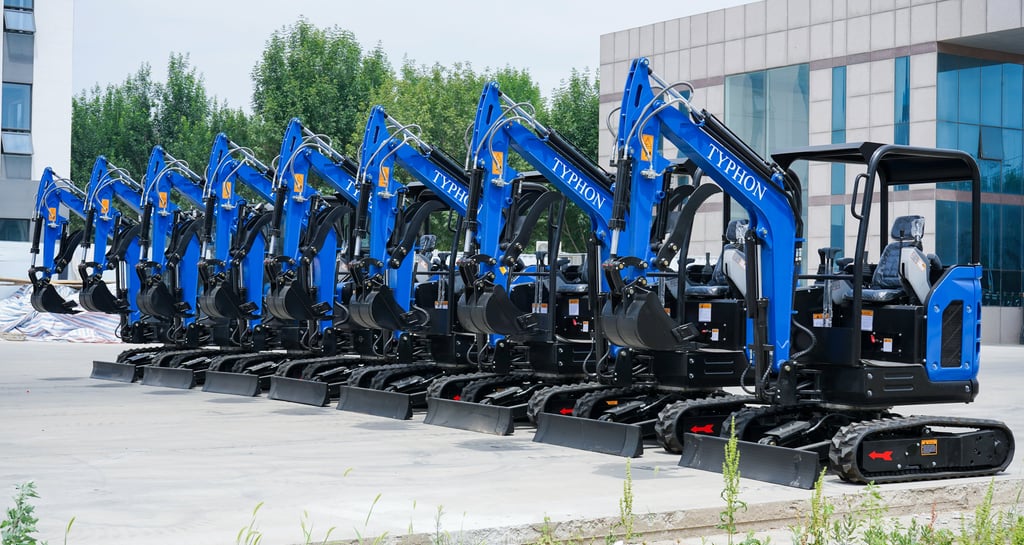

FAQS
1. What is a mini excavator?
A mini excavator, often referred to as a compact excavator, is a small yet highly adaptable machine primarily utilized for excavation tasks across various environments, including construction sites, landscaping projects, and utility installations. In contrast to larger excavators, mini excavators possess a compact design and are lightweight, facilitating easy transportation. They are typically equipped with a standard backfill blade and can accommodate a range of attachments, making them particularly suitable for operations in confined areas where larger machinery would be impractical or disruptive.
2. What size mini excavator do I need?
Choosing the right size of mini excavator depends on several factors:
- Project Requirements: Evaluate the project's scope, including the necessary depth and width of the excavation.
- Space Limitations: Take into account the dimensions of the work area and access points. Smaller machines may be more suitable for confined space.
-Lift Capacity: Ensure the machine’s lift capacity meets the needs of the job for moving materials or other specific task
-Transportation and Storage: Larger models require more robust transportation and storage solutions.
3. How much does a mini excavator weigh?
Mini excavators are available in a range of sizes, which directly influences their weight. Generally, these machines weigh between approximately 2,000 pounds (around 1 ton) and 18,000 pounds (approximately 8 tons). The weight of a mini excavator is a critical consideration, particularly regarding transportation logistics and the suitability of the machine for various terrains without risking damage to the ground.
4. How wide is a mini excavator?
The width of a mini excavator is a significant factor in assessing its ability to navigate through tight or narrow spaces. The widths typically vary from about 3.5 feet (1.06 meters) to 6 feet (1.83 meters). This measurement is essential to ensure that the excavator can effectively access and operate in restricted areas, such as between buildings or within enclosed yards.
5. How deep can a mini excavator dig?
The maximum digging depth achievable by a mini excavator is contingent upon the machine's size and the specific boom configuration employed. Smaller models may offer a maximum digging depth of around 5 feet (1.5 meters), while larger mini excavators can reach depths of up to 12 feet (approximately 3.66 meters) or more. Selecting the appropriate size of excavator for a given project is vital to ensure it can perform the necessary excavation tasks effectively.
6. How much can a mini excavator lift?
The lifting capacity of mini excavators is influenced by their size and structural design. Typically, these machines can lift loads ranging from 500 pounds (227 kilograms) to 4,000 pounds (approximately 1,814 kilograms). It is advisable to consult the manufacturer's specifications to determine the exact lifting capabilities of a specific model.
7. How to load a mini excavator on a trailer?
Loading a mini excavator onto a trailer necessitates meticulous preparation to ensure safety:
- Ramp Alignment: Securely attach the ramp to the trailer and align it with the excavator's tracks.
- Slow Ascent: Gradually drive the excavator up the ramp, ensuring smooth movements to prevent tipping.
- Securing the Excavator: After positioning the excavator on the trailer, lower all hydraulic arms and the blade, turn off the machine, and use chains or straps to fasten the excavator to the trailer. Confirm that it is stable and will not shift during transport.
8. How to operate a mini excavator?
To operate a mini excavator, one must follow several essential steps:
- Pre-Operation Inspections: Verify that the machine is functioning properly by checking fluid levels, the condition of the tracks or wheels, and the overall state of the excavator's attachments and cables.
- Safety Protocols: Before commencing operations, ensure the area is free of bystanders and obstacles, and plan the intended digging path.
- Starting the Machine: Turn on the ignition and allow the engine to warm up for a few minutes.
- Maneuvering the Excavator: Utilize the joystick controls to manage the arm, boom, bucket, and cab rotation. The other control set typically governs the machine's movement and blade operation.
- Digging and Lifting: Adhere to safe digging practices, maintaining balance and stability throughout the operation.Write your text here...
TinyExcavator
Find mini excavator suppliers with reasonable prices and variety.
United States: +1 213-214-2203
Singapore: +65-88051086
Cambodia: +855-86719472
United States: +1 323-532-5703
TYPHON Machinery Offices
2522 S Malt Ave. Commerce, CA 90040 United States
Blk 73, Geylang Bahru, #06-3062, S(330073), Republic of SIngapore
© 2025. All rights reserved.

